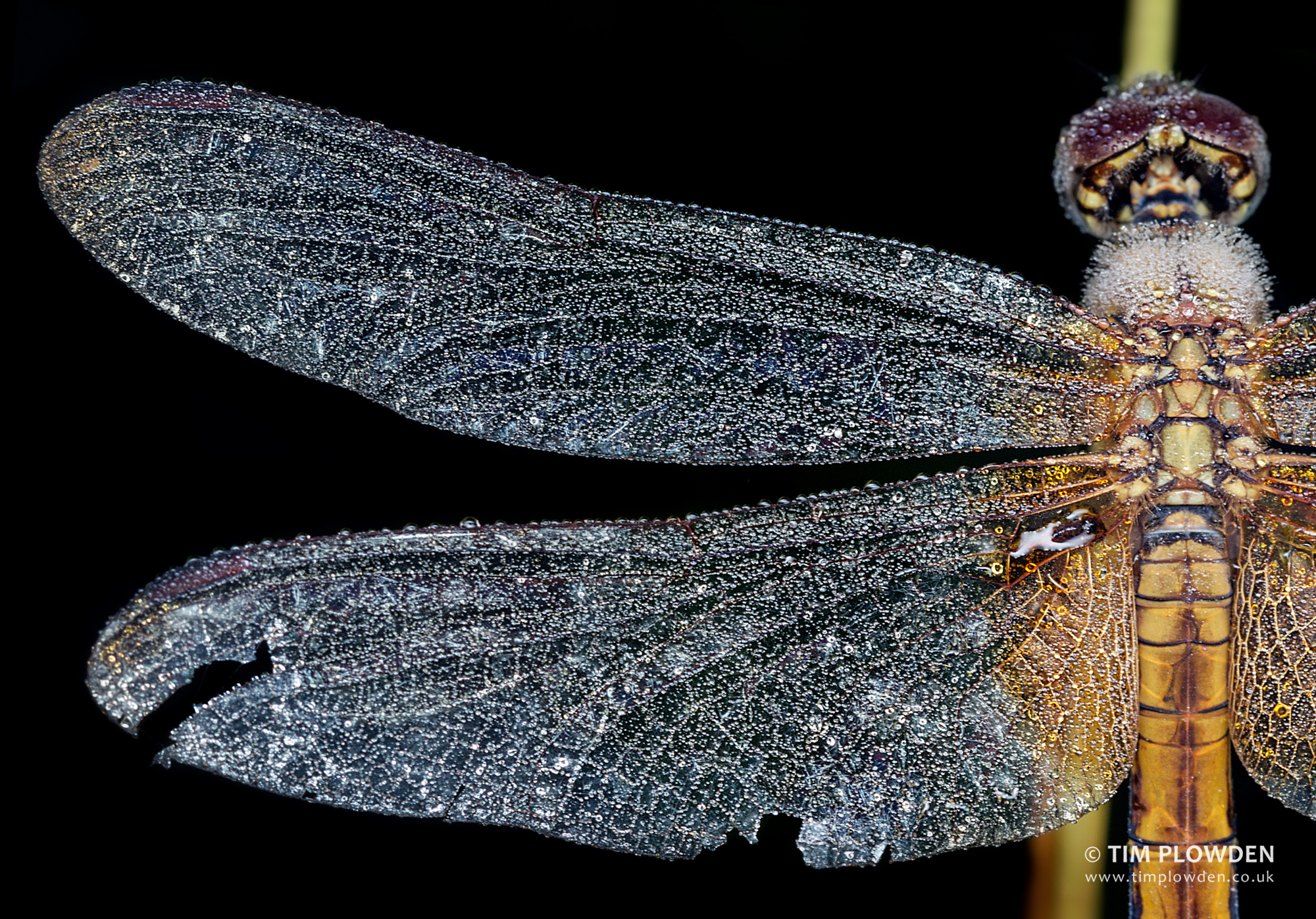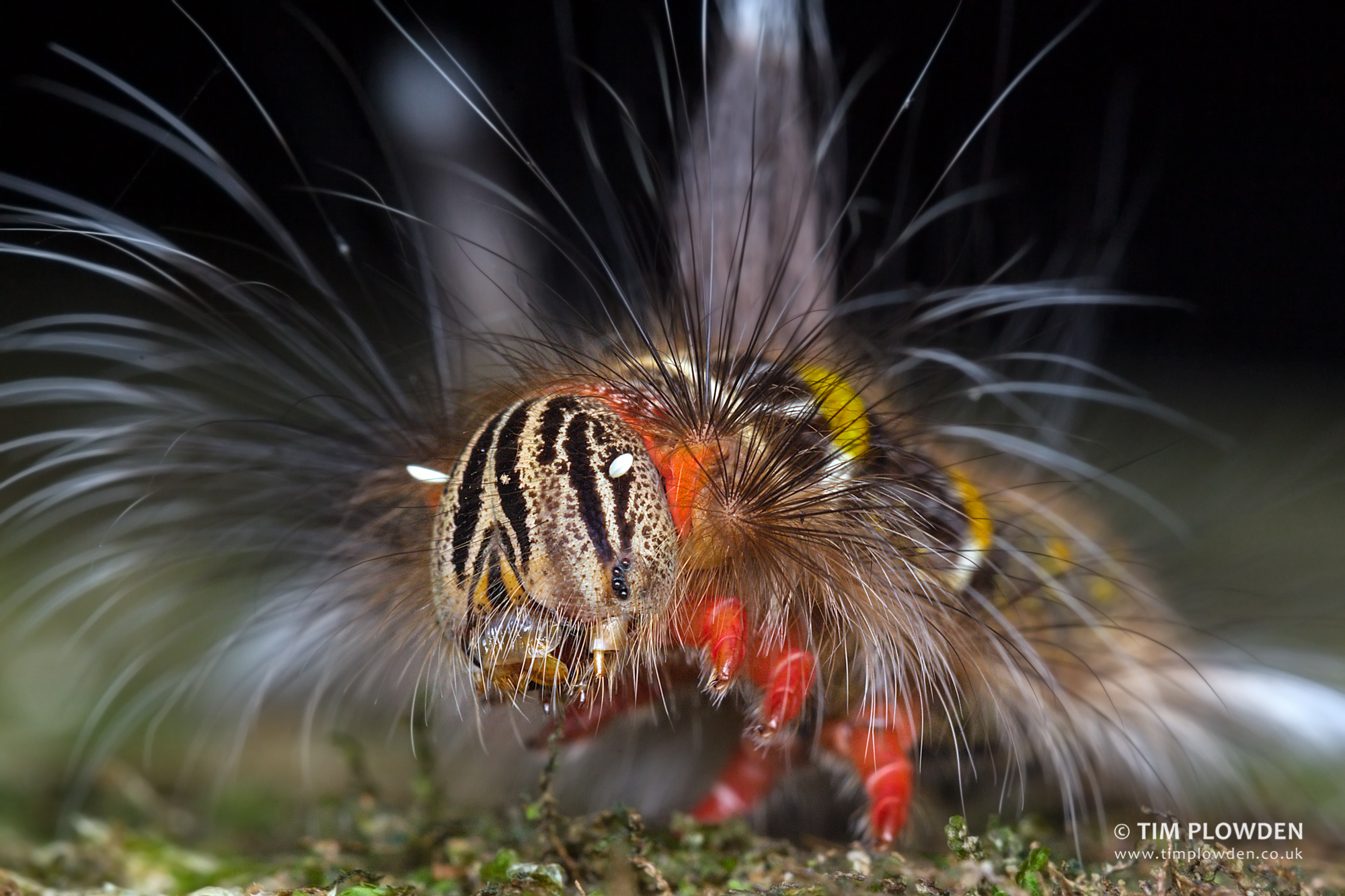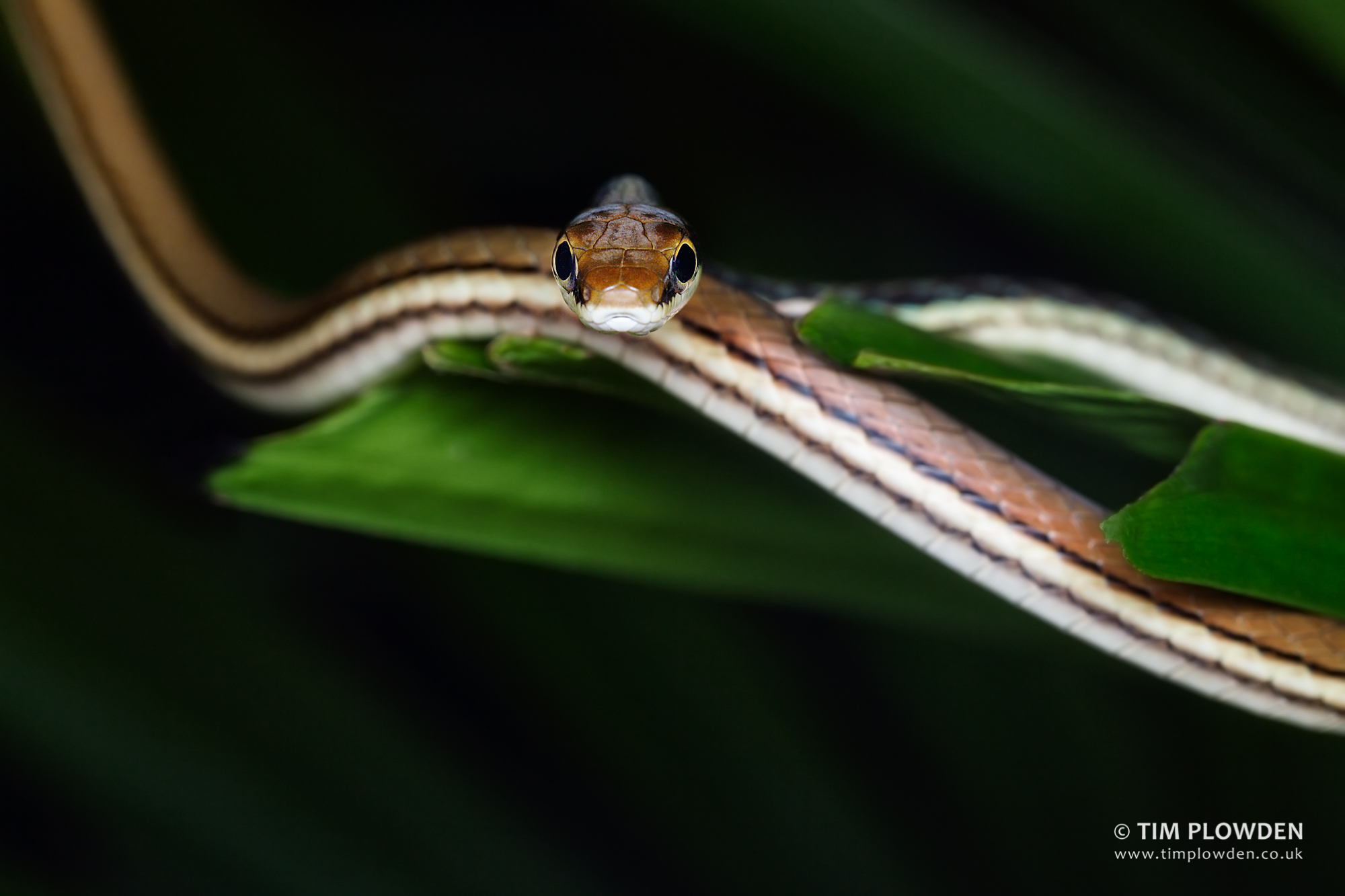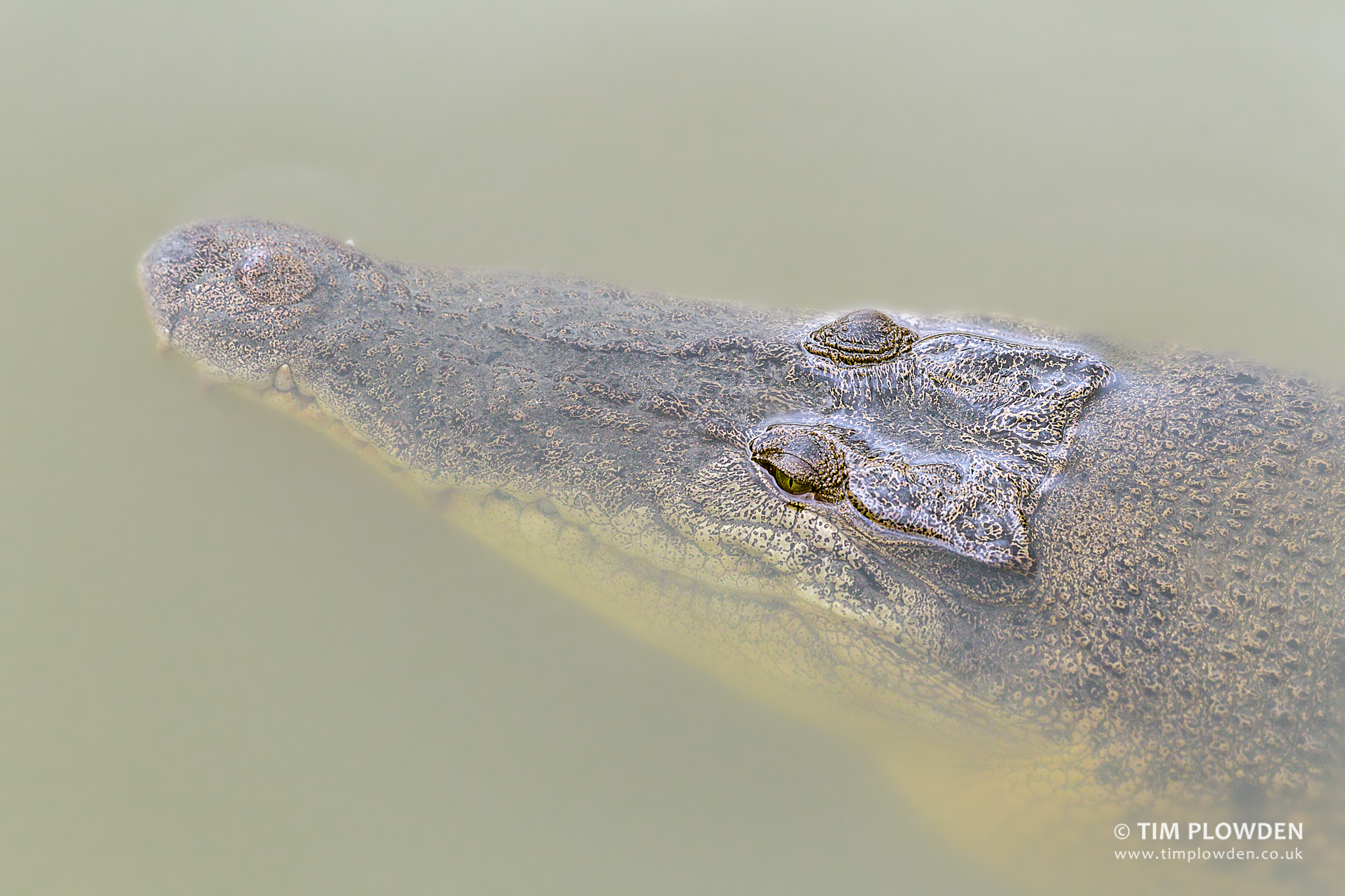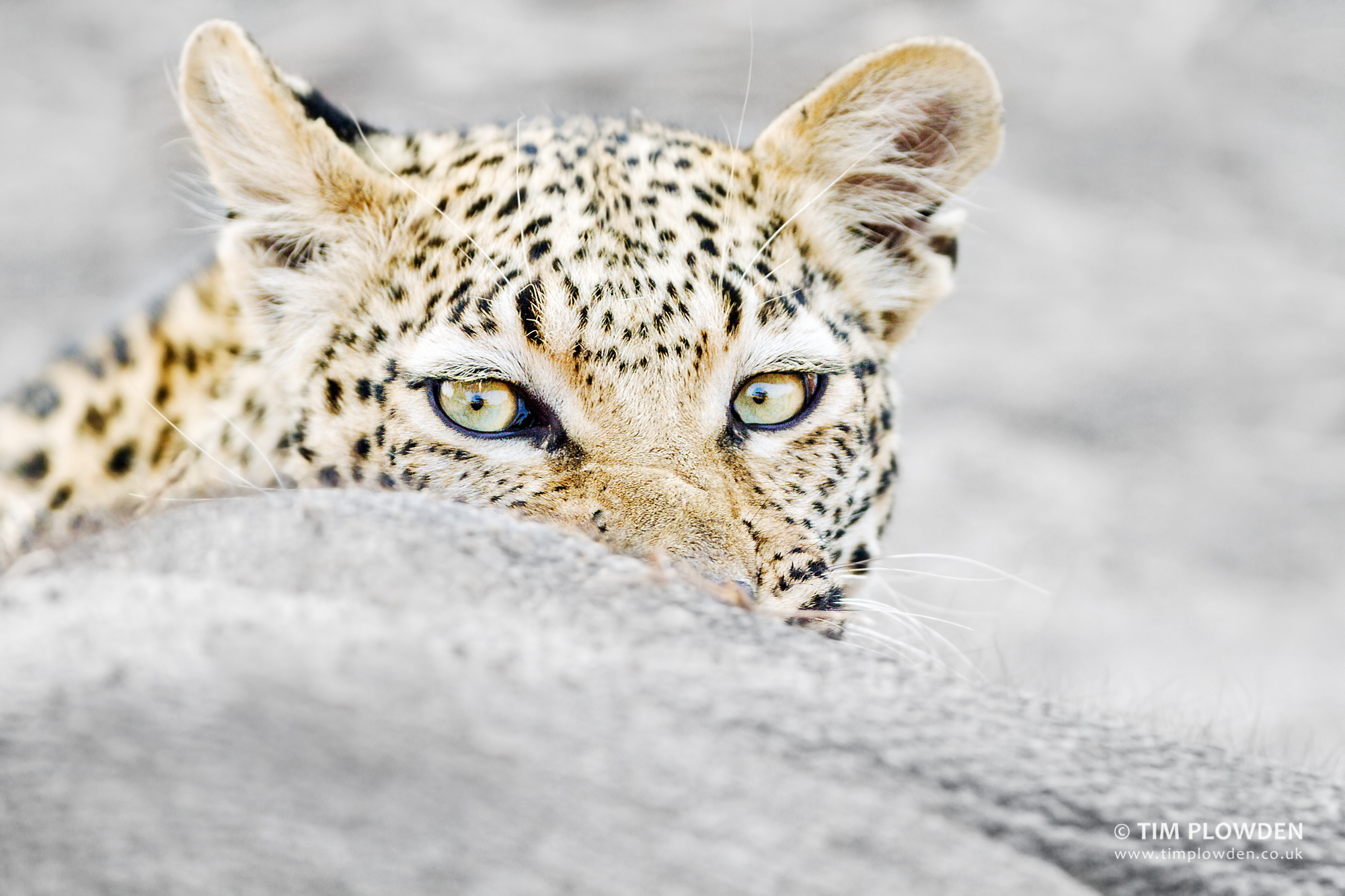“A well documented conservation story can make a difference not just by raising awareness… it can help to prompt authorities into action.”
In honour of International Day of Forests, the IPF spoke to British wildlife photographer Tim Plowden, who is celebrated for his incredible portrayals of the natural world. From a pack of yellow-eyed wolves hunting caribou in Alaska, to a lone leopard feeding on an elephant in southern Africa, Tim Plowden’s images capture moments in the wild with startling clarity.
For his most recent work, Tim Plowden visited the rain forests of South-East Asia – some of the oldest in the world. By day he photographed animals on the brink of extinction, including the Red-Shanked Douc monkey in Vietnam. At night he got up close and personal with the array of fantastically patterned bugs that were flying, unfurling and crawling along the forest floors.
Plowden tells us more about his profession, his efforts to reconnect and engage audiences with the natural world and why the destruction of habitats, including forests, would be fatal for us all.
You’re a photographer, videographer and writer based in South-East Asia with more than a few awards to your name. How did it all begin?“Sometimes things have to be seen to be believed.”
I grew up by the River Thames in Berkshire, England. On the edge of the Chilterns, I was always close to nature. I am now a wildlife photographer and I live in Singapore which enables me to cover regional wildlife stories. The idea to be a wildlife photographer took root when I was taking a sabbatical in wildlife conservation. A local organisation paid me to use my wildlife images in one of their leaflets. Fast forward a few years and while I was between contracts, I started photographing local deer. This led to a photography award and I haven’t looked back since.
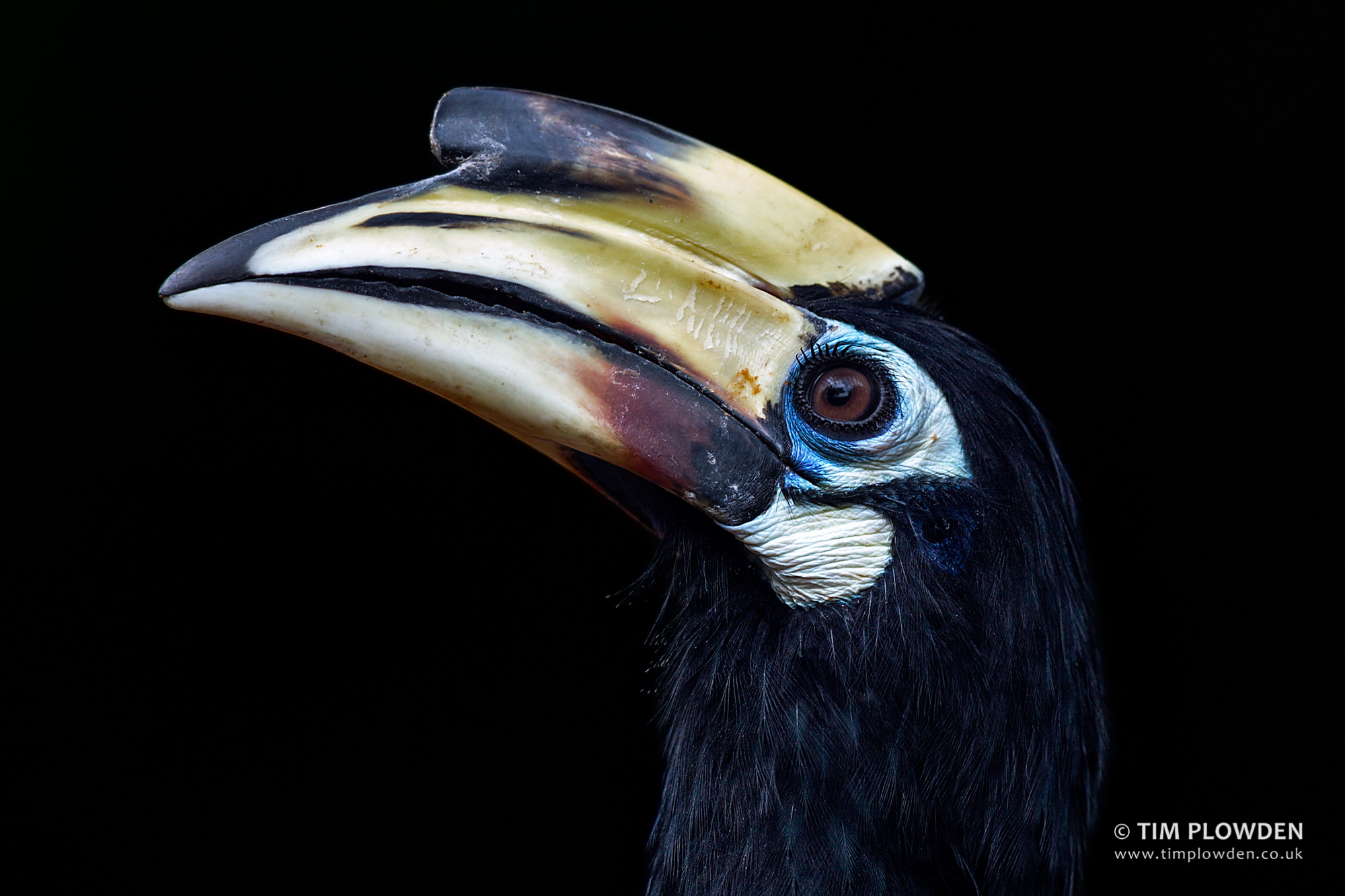
Close-up of an adult female Oriental Pied Hornbill (Anthracoceros albirostris) in captivity. [Image credit: Tim Plowden]
I love working in the field and observing wildlife behaviour. Photography allows me the opportunity to share these magical moments with a wider audience. I can give people an insight into a world they might not be aware of. By doing so I hope to get people to support conservation work.
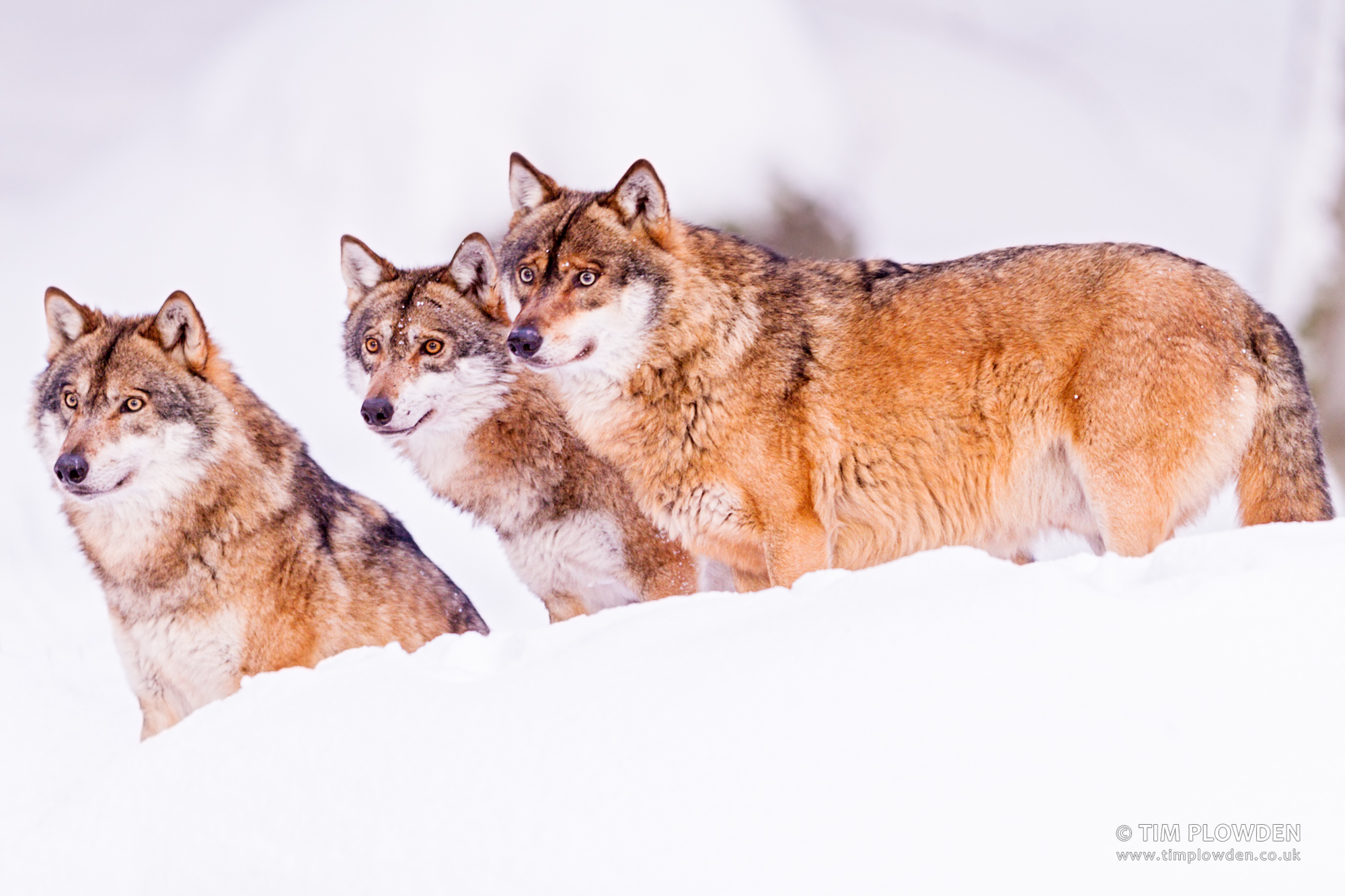
Captive Grey Wolf (Canis lupus) are constantly alert and engaged with their surroundings. [Image credit: Tim Plowden]
I photograph wildlife because it allows me to express my emotional connection with the natural world. I respect all living creatures and their welfare is always paramount when I photograph them.
What led you to photograph nocturnal wildlife in rainforests?“I want to show that when animals trust us, we can transform our relationship with nature.”
I was working on a project about primates in southeast Asia. This work led me to some of the oldest and most biodiverse forests on the planet. These forests, which are millions of years old, are rapidly disappearing. While photographing endangered primates during the day, I seized the opportunity to document the equally threatened wildlife throughout the night.
Why did you focus on macro photography for this project? And was it difficult to achieve from a technical point of view?“I soon discovered that the rainforest at night is a very special experience.”
I soon realised it was possible to get up close and personal with most nocturnal species. From a subject point of view – there are thousands of species of amphibians, reptiles and invertebrates which are facing extinction. Macro is the best way to photograph these animals. From a practical perspective a 100mm macro lens is a lightweight lens to carry. It can be handheld so you can dispense with a tripod. From a creative perspective macro photography opens up a wealth of artistic opportunities. It allows me to focus on design elements, anatomical details and abstract compositions. The chief technical issue is lighting and using artificial light in an aesthetic way while sweating profusely.
“Macro photography opens up a wealth of artistic opportunities. It allows me to focus on design elements, anatomical details and abstract compositions.”
You’ve worked in a whole host of different climates and conditions. What’s the most challenging place you’ve ever had to work in?
I’ve been to the Himalayas five times now. During my last trip to a remote part of Yunnan in China, I was dealing with sub-zero temperatures while staying at a wildlife research hut in the mountains. It was supposed to be spring time but unseasonal snow meant that hiking off trail with my camera gear was treacherous at best. I was also suffering food poisoning and on a restricted diet. To make matters worse, the monkeys I was looking for were inaccessible. The snow had pushed them further away and the snowy terrain was impassable.
Have you witnessed the changes within climate and noticed any changes within animals’ behaviours?
With the annual forest fires in Sumatra and Borneo, not only is critical habitat being lost but the resulting “haze” is bad news for Singapore, Malaysia and southern Thailand.
“With hazardous levels of air quality, the consequences for wildlife can be fatal.”
I tried photographing wildlife in mangroves and mountainous forests during the haze. Although wild animals can be remarkably resilient, they seemed subdued.
I was in southern Africa during one of the most prolonged dry seasons of recent years. I saw elephants that were succumbing to starvation. Some had collapsed in watering holes and were being scavenged on by a rolling mass of crocodiles. Other’s bones were laid bare on parched earth as vultures fought over scraps. I witnessed a pride of lions feed on one elephant they’d just taken down. In the bush I saw a leopard feast on the hind quarters of a freshly killed elephant calf. Elephants had become easy pickings for predators and scavengers alike. Closer to civilisation elephants were coming into urban areas in search of food. At night you could hear locals trying to scare them away from their gardens. What role does photography have to play in highlighting conservation issues?Photography has a critical role to play in highlighting conservation issues. There are so many conservation stories that need to be told.
“The camera is perhaps the best weapon we have to fight.”
Which conservation issues concerns you the most?
All conservation issues are concerning. In this part of the world the illegal wildlife trade, poaching and illegal logging are having a devastating effect.
What is the most incredible creature you’ve ever photographed?
That’s a hard question because all creatures are incredible to me. Animals that are thought of as intelligent, such as wolves, primates and whales hold a special place. I couldn’t help but be in awe of a pair of wolves I saw hunting caribou in the Alaskan range mountains. A mastery of their environment was immediately clear as they leapt over terrain that I could only stumble through. The subtlety of their communication as they hunted together only highlighted my limited senses. I only managed a record shot, but I vowed to return one day to complete my dream project. It might end up being a dream as wolves are systematically persecuted in most countries that they live.
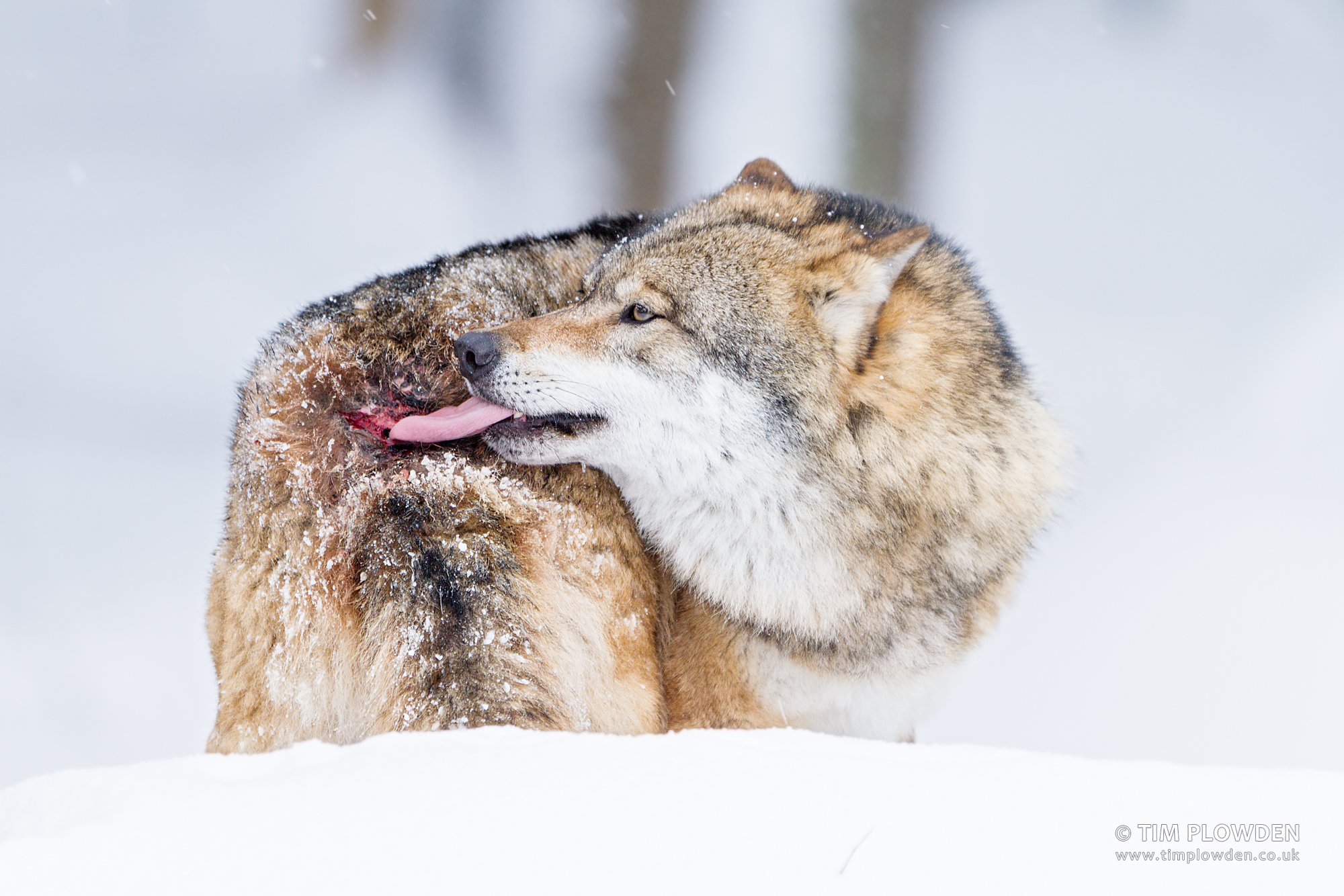
Captive Grey Wolf (Canis lupus) omega male licks wound inflicted by dominant pack member. [Image credit: Tim Plowden]
I heard from a wedding photographer that 90% of running a photography business is marketing and only 10% is photography. The amount of time I spend in the field is a lot less than I’d like but marketing is essential. It seems to be the case that many organisations expect not to have to pay for photographs. The value of photography seems to be declining.
“Animals are getting harder to find. Species are disappearing at an alarming rate and in some countries are impossible to find in the wild.”
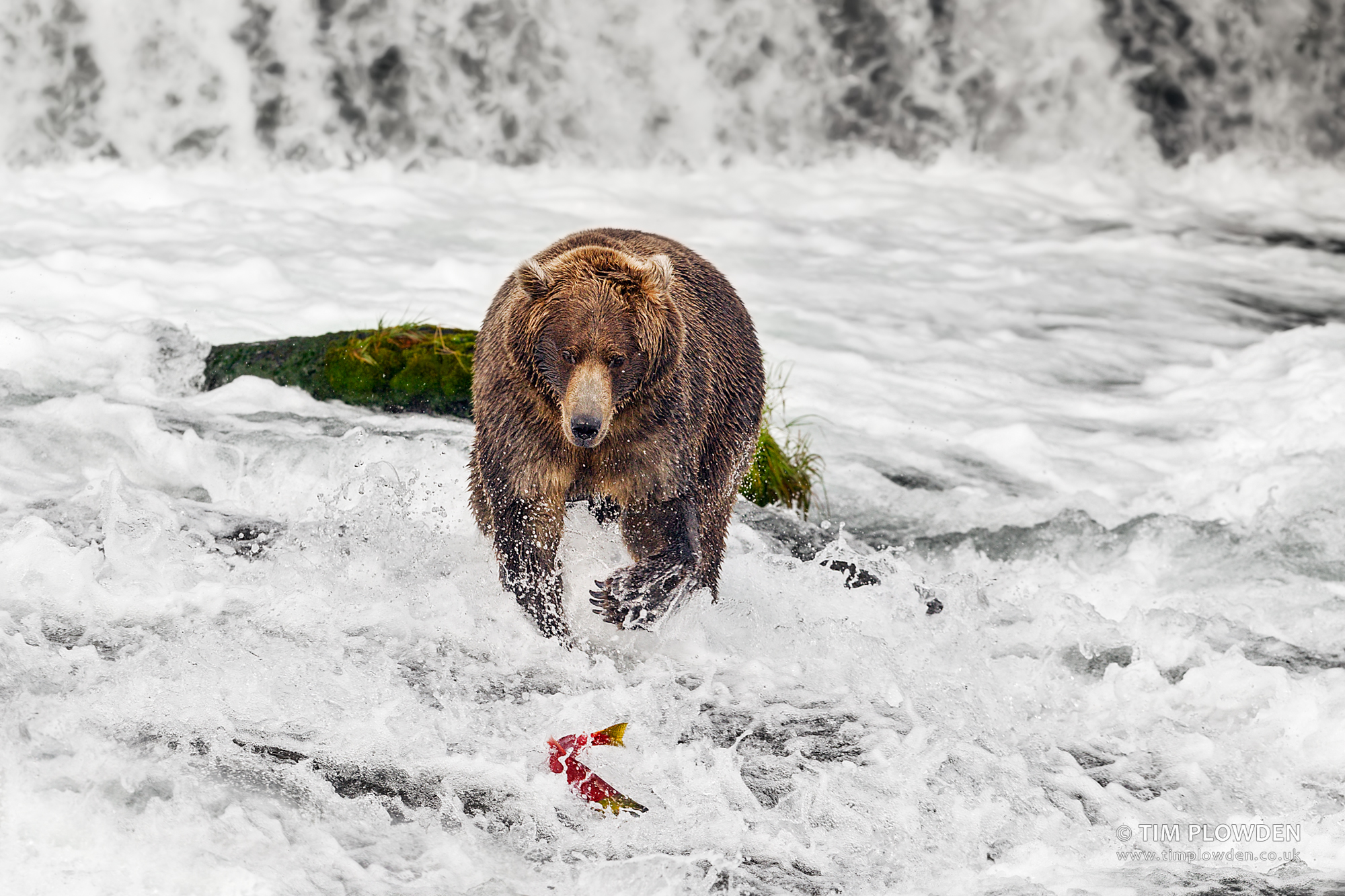
A sub-adult male brown bear chases a Sockeye salmon as it flees beneath Brooks Falls, Alaska. [Image credit: Tim Plowden]
Fieldcraft or field skills are what help to set apart wildlife photography from other photography professions. It helps to have an understanding of your subject whatever branch of photography you choose. For wildlife photography, you do need to have a knowledge of your subject(s) which is as broad and as deep as possible. It pays not to be blinded by science though, you do need a healthy balance of technical knowhow, creativity and subject knowledge. It’s not about big lenses and expensive kit.
“Stamina, patience and intuition are key.”
Do you have any advice for aspiring wildlife photographers? What’s the best way to get into the industry?
Find a wild animal you are interested in photographing and develop a personal project dedicated to telling the story of that animal. Practice photographing as often as possible. Don’t be ashamed of photographing zoo animals: all practice is good. Look for inspiration both inside wildlife photography, in other branches of photography, and in other mediums. Only enter photo competitions that don’t grab your rights to the images. Avoid giving away images for free.
To find out more about Tim Plowden’s work, visit his website and follow him on Instagram.



